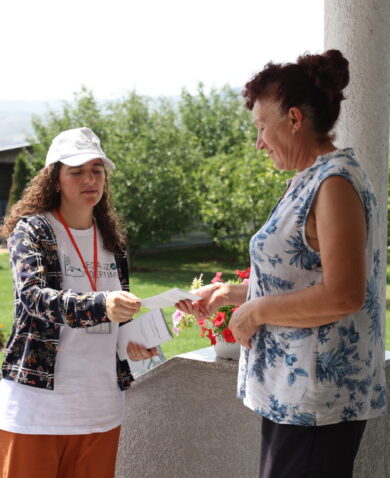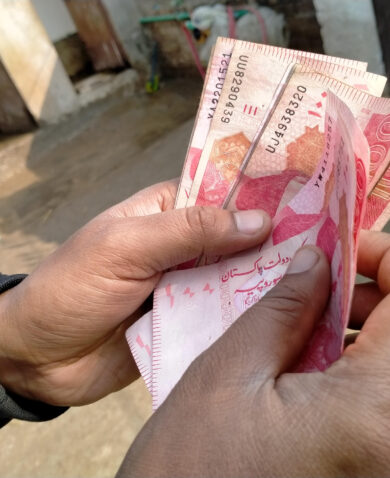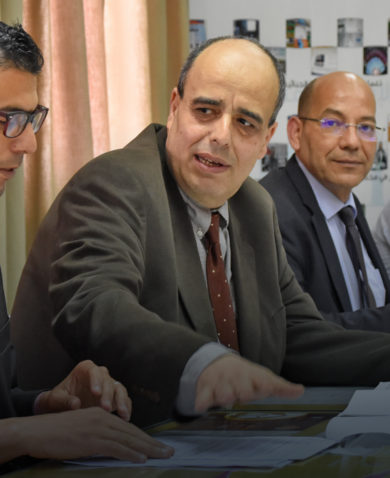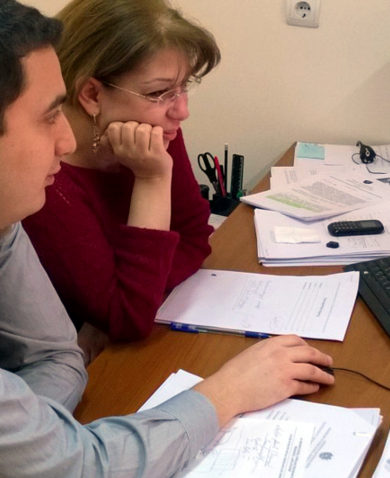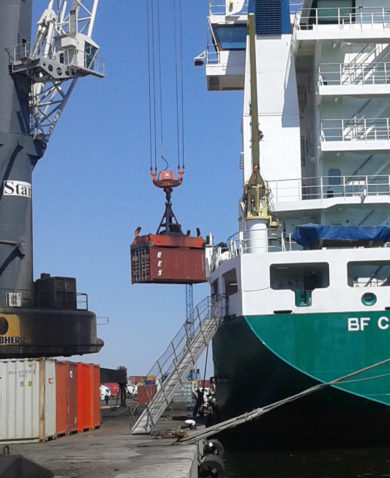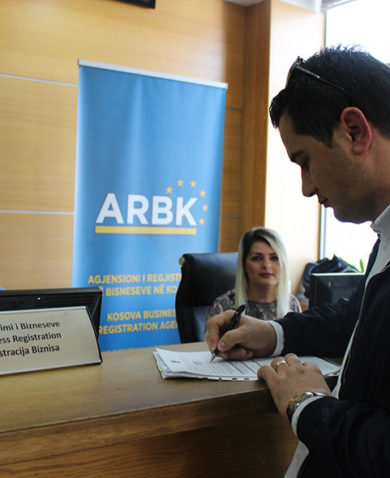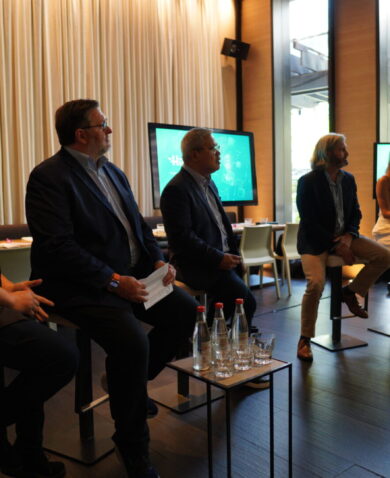
How Chemonics Is Mobilizing Finance for Development
October 28, 2021 | 6 Minute ReadCountries need to mobilize private capital to finance self-reliance. This blog introduces USAID’s Five Point Framework and showcases how Chemonics is mobilizing finance for development.
USAID is putting self-reliance at the core of its strategy to help countries achieve and finance their own development objectives and thereby end their need for foreign assistance. To finance self-reliance, countries will need systems that mobilize and spend public resources efficiently, enabling environments that allow the private sector to thrive, and diverse and well-regulated financial markets. Mobilizing private sector capital to help finance development objectives is key to creating sustainable long-term growth. Foreign direct investments surpass official development assistance, but they remain concentrated in countries with high growth potentials, stable markets, and effective rule of law. Domestic private investors and financial institutions also gravitate toward more creditworthy finance seekers and build in premiums to account for their real and perceived risk of doing business. From the Philippines to Tunisia, Chemonics’ programs are working with financial intermediaries, government institutions, and domestic and international private sector stakeholders to lower risks that inhibit private investment and catalyze finance needed to empower countries to achieve sustainable development impact and economic growth.
The International Finance Corporation (IFC) estimates that 65 million firms, or 40% of small- and medium-sized enterprises (SMEs) in developing countries, have an unmet financing need of $5.2 trillion every year. High interest rates, short-term products, and rigid collateral requirements make it challenging for SMEs to access the finance they need for their businesses grow. Let’s look at an example. Isaac is an entrepreneur in Ghana with an annual operating income of $300,000 looking to invest in agricultural equipment leasing. When he goes to the bank to request a five-year loan of $800,000, the bank gives him a 20% annual interest rate on the loan. Can Isaac get the loan to start his business? No. Isaac would need to pay $160,000 in principal plus $160,000 in interest annually which totals $320,000, or $20,000 more than what he can afford in a given year. What if Isaac’s interest rate instead was 10%, could he get the loan? Yes. He would only have to pay $80,000 interest for a total of $240,000 leaving him $60,000 in net cash flow.
The difference in interest rates and whether Isaac can access the finance he needs to start his business depends on several systemic and transactional factors that could have less to do with Isaac’s business and more to do with risk and cost factors faced by the financial institution in Ghana. The financial institution may offer a higher interest rate to account for a period of macroeconomic instability in Ghana or for not having an easy way to assess Isaac’s creditworthiness and conduct know-your-customer due diligence. Foreign investors may face similar worries when looking to invest in a company like Isaac’s. Of course, Isaac’s creditworthiness will also impact his interest rate, but that is often one factor of many. How can donors like USAID and implementers like Chemonics help lower cost and risk factors faced by the private sector to catalyze private capital in developing economies?
USAID’s Five Point Framework introduces a way to assess the constraints to finance across five main factors:
1. enabling conditions
2. financial infrastructure
3. disrupters/ facilitators
4. finance seekers
5. finance providers and intermediaries
The systemic factors — enabling conditions, financial infrastructure, and disrupters/facilitators — represent the broad conditions in which the financial sector operates. The transaction-specific factors are those that affect the ability of finance seekers and finance providers and intermediaries to close a deal. Interventions in each of the five points can lower the risk and cost factors that the private sector face and help mobilize finance for development.
Chemonics has a long history implementing economic growth projects that work across the five points of the framework and are mobilizing finance around the world.
Interventions to Strengthen the Enabling Conditions
Improving conditions for private investment, the USAID Kosovo Economic Governance Activity, implemented by Chemonics, is supporting national and municipal government partners to fully formalize unpermitted constructions in Kosovo, helping property owners realize the benefits of secure property rights and empowering them to use their property as collateral to access finance. In just two years, the pilot municipalities formalized over €200 million in estimated property value.
Interventions that Build the Financial Infrastructure
The USAID Philippines E-PESO project, implemented by Chemonics, partnered with the Philippines Central Bank to create the National Retail Payments System and establish a governance and regulatory framework for a safe, reliable, and efficient interoperable retail payment system. With the project’s support, the National Retail Payment System created automatic clearing houses, PESONet and InstaPay, to facilitate electronic fund transfers and established a Payment System Management Body to set policies that eliminate risk for real time financial transactions and promote anti-money laundering. A more efficient and interoperable payment system that reduces the time, cost, and risk of transferring funds enhances the financial infrastructure and lowers transaction costs of originating and processing loans making finance more affordable.
Interventions as Disrupters and Facilitators of Finance
In the Democratic Republic of Congo, through USAID’s Investment Facilitation Activity in the DRC, Chemonics is operating an investment facilitation platform that provides support to businesses and investors. On the demand side, the USAID Investment Activity trains businesses on investor due diligence requirements, business plans and pitching, and how to structure deals to help them become investment ready. On the supply side, the USAID Investment Activity investment facilitation professionals work with investors to assess and mitigate transaction costs and risks by providing market research and due diligence before they make a deal. By serving as convener and advisor to both businesses and investors, USAID Investment Activity is lowering the investment risk factors and helping to mobilize private capital into the DRC. In Tunisia, the USAID Jobs, Opportunities, and Business Success (JOBS) activity helped design and launch Tunisia’s first digital investment platform, JoussourInvest. Through JoussourInvest, JOBS connected 2,000 SMEs seeking equity and quasi equity investments with 50 equity investors and facilitated 27 transactions of over $20 million.
Interventions with Finance Seekers
At the transaction level, the USAID Zrda activity in Georgia is implementing innovative blended finance mechanisms with the Georgian Partnership Fund’s subsidiary, StartUp Georgia, to help start-ups in Georgian municipalities increase their competitiveness. The capital provided by StartUp Georgia was matched by the Zrda activity grants which reduced the start-up’s debt to equity ratio, making them more attractive finance seekers. In Pakistan, the USAID Small and Medium Enterprise Activity (SMEA) is giving business development support to help SMEs comply with international quality and safety standards, access new markets, and attract investments. In parallel, SMEA flagship Challenge Fund is giving SMEs access to three types of grants 1) traditional growth grants to help SMEs become more competitive, 2) innovation grants to pilot novel solutions to sector-wide growth barriers, 3) scale up grants for SMEs that demonstrate potential to launch, market, and grow. To date, SMEA has awarded 113 Challenge Fund grants and directly benefited 3,929 SMEs through its business development support. SMEs that receive business development support, directly or through grants, strengthen their competitiveness and are more likely to meet the requirements from banks or investors to access private capital.
Interventions with Finance Providers and Intermediaries
The USAID Jobs, Opportunities, and Business Success (JOBS) Activity works with the largest public sector bank in Tunisia to streamline and facilitate lending to SMEs by adopting new benchmarking criteria for finance seekers and developing a new scorecard to review credit applications. The reforms led to $35 million in new lending to over 250 SMEs in Tunisia. Additionally, to support the recovery of businesses impacted by the pandemic, JOBS partnered with microfinance institutions (MFIs) Baobab Tunisie and Advans Tunisie to launch their new rapid recovery loan packages for micro and small enterprises and women-owned businesses in underserved regions across Tunisia. With $3 million in grants to the MFIs — in technical assistance and microgrants to help borrowers repay their loans — JOBS catalyzed $33.3 million from the microfinance institutions that supported 16,445 SMEs sustaining more than 40,000 jobs and creating 3,200 more Meanwhile, in Colombia, the USAID Rural Finance Initiative (RFI) is working with 14 financial intermediaries — from large, commercial banks to small MFIs — to increase inclusive financial services in Colombian municipalities. The project used grants, technical assistance, and Development Credit Authority guarantees to mobilize $1.21 billion in financial services and products to over 900,000 rural clients. Using grants, technical assistance, and loan guarantees strengthens the capacity of financial intermediaries and offsets risk and cost factors that lead to higher interest rates.
The Impact of Private Capital
The Five Point Framework is a useful tool to organize a range of interventions to mobilize finance for development. It is important to remember that there is never just one factor that constrains finance; interventions are needed across all five points for good deals to get made. At Chemonics, we recognize the catalytic impact that private capital has in fostering enterprise-driven economic growth. Our programs are implementing systemic and transactional-level interventions around the globe to help business owners like Isaac access finance and create jobs that will stimulate economic growth and help countries achieve self-reliance.
Posts on the blog represent the views of the authors and do not necessarily represent the views of Chemonics.


